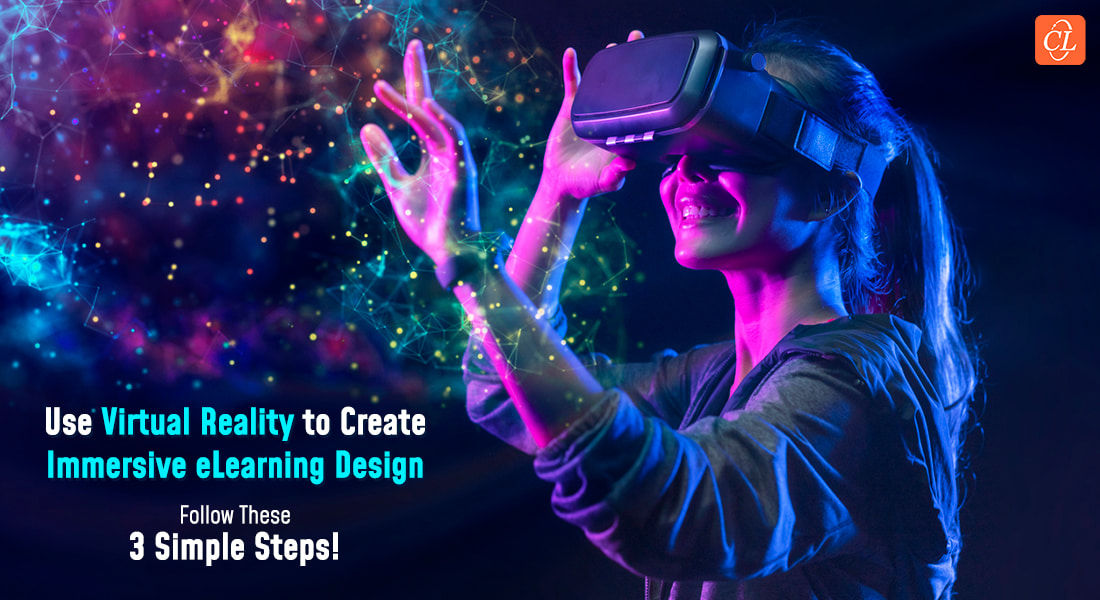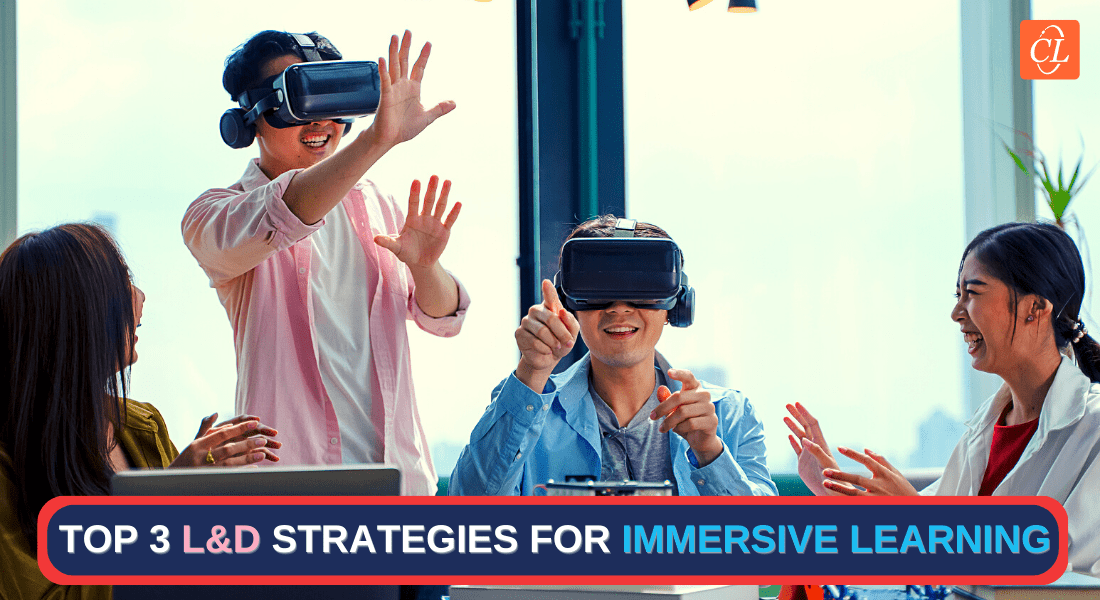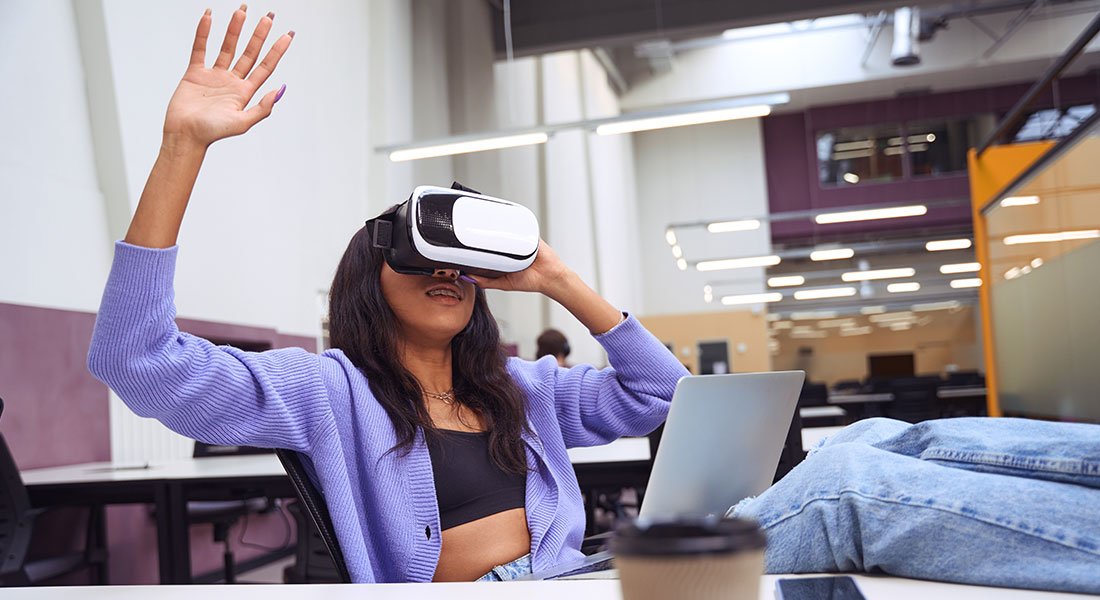3 Simple Steps for Immersive eLearning Design Using Virtual Reality

The Brandon Hall Group says about 45% of high consequence industries think virtual reality simulations are important to help them achieve their business goals. That is almost half of this type of industry that are making the case to include virtual reality into their business success strategies. We as eLearning designers and developers need to sit up and pay attention to such immersive learning strategies and innovative new technologies.
Are You Looking to Engage Your Learners with Immersive eLearning?
Here are three simple steps to design impressive courses:
- Create an Outline
- Design Assets
- Go Live
Read on to discover more.
Have you ever imagined what it would be like to travel to outer space? Ok. Maybe you have not explored the recesses of your mind to go that far, but how about imagining what it would be like to live in another country, or on a rural farm. With virtual reality technology it is possible to go to never-before-seen places without leaving the comfort of your home or place of work.
Virtual Reality for Immersive eLearning Design: A Definition, An Example, and Benefits
Are you wondering what immersive learning and virtual reality are? According to Strivr, immersive learning is an experiential training methodology that uses virtual stimulations to immerse the learner in real-world and other hypothetical scenarios to train their employees in a safe and engaging learning environment. They say that this approach is based on neuroscientific research, which indicates that we humans process virtual simulations like we would grasp a real-world experience. Better yet, the learner can imbibe new skills in a risk-free environment where they don’t have to worry about making mistakes.
Virtual reality or VR is a simulated experience that can be just like or completely different from the real world. You can apply this innovative technology to various arenas, such as video games, medical or military training and virtual business meetings.
Find out about 6 fascinating trends in eLearning design and development here
These concepts might sound like the stuff of sci-fi movies. I mean after all; we are talking about immersing learners into a virtual world and consequently blocking out the real world. Well, what if I told you that virtual reality is already here and is engaging learners worldwide?
One of the first recorded examples of virtual reality in action was in the late 90s when the University of North Carolina virtually modelled its computer science department, and professionals used headsets and hand controllers to simulate virtually moving through this space. In the present time, virtual reality and artificial intelligence are being used by car companies, such as BMW, as well as in the medical field through breakthroughs such as virtual reality exposure therapy to treat anxiety disorder and post-traumatic stress disorder.
Closer to home, companies are using VR to onboard their new recruits. A study conducted by researchers in the King Saud University in Saudi Arabia found that taking the VR approach to training not only makes for better understanding but also higher satisfaction among students as their errors are reduced and completion time is shortened.
Today, eLearning experts are already discussing and applying virtual reality in their learning programs. Do you want to know how you can get onboard the virtual reality train and effectively engage your employees? Well, keep on reading for some exciting tips on how to leverage virtual reality technology for immersive learning experiences in your organization.
Here are three practical steps on how you can create immersive learning content using VR.
3 Workable Steps to Leverage VR for Immersive eLearning Design
Step 1: Create an outline
You need to gain an understanding of your learners and your organization’s training needs. Once you have conducted a training needs analysis you need to create an outline of your course with the learning objectives that you have discussed and signed-off on. You then need to create a detailed flowchart with clear learning objectives. This is where the instructional designer and L&D team come into play. They need to design a roadmap that clearly defines how learners will experience and understand the content through visual elements and a simulated environment.
Step 2: Design Assets
The next step in designing an immersive learning program for your employees is to build assets that meet the learning goals outlined by the instructional designers. These assets can include 3D modeling, 2D graphic design, videos, and voice over audios. It is imperative that these virtual reality learning assets align with the learning objectives of the training.
Step 3: Go Live
At this point in the eLearning design process, the developer needs to write custom coded scripts that make the training content and assets that have been outlined and designed in the previous two steps come alive. They need to make sure the eLearning content is playable utilizing authoring tools. This is also the last step in the process of designing immersive learning experiences. It involves creating VR content using computer programming languages, such as C#, to design virtual simulations and interactions. The end goal is to create an eLearning course that is accessible on the intended platform, be that VR headsets, computers, or mobile devices.
It’s a Wrap
And there you have it. These are the three simple steps to begin your journey of using this avant-garde technology to design eLearning courses and engage your learners even more effectively.
There are two types of VR designs to keep in mind. First, there is 360-degree VR where the learner is viewing the virtual world through the required hardware, and they can only move their head and hands. Second, there is full VR where the learner is interacting with the virtual world and simulated objects by walking through a space using their whole body.
Do you want to learn more about immersive learning and virtual reality and how you can use it to enhance your learners experience and engage them with greater efficiency? Do check out our eBook titled, “eLearning Trends 2022 – The View from the Trenches” to learn more about this and other upcoming trends in the eLearning space in 2022. Go ahead and click on the link below to download it now.





